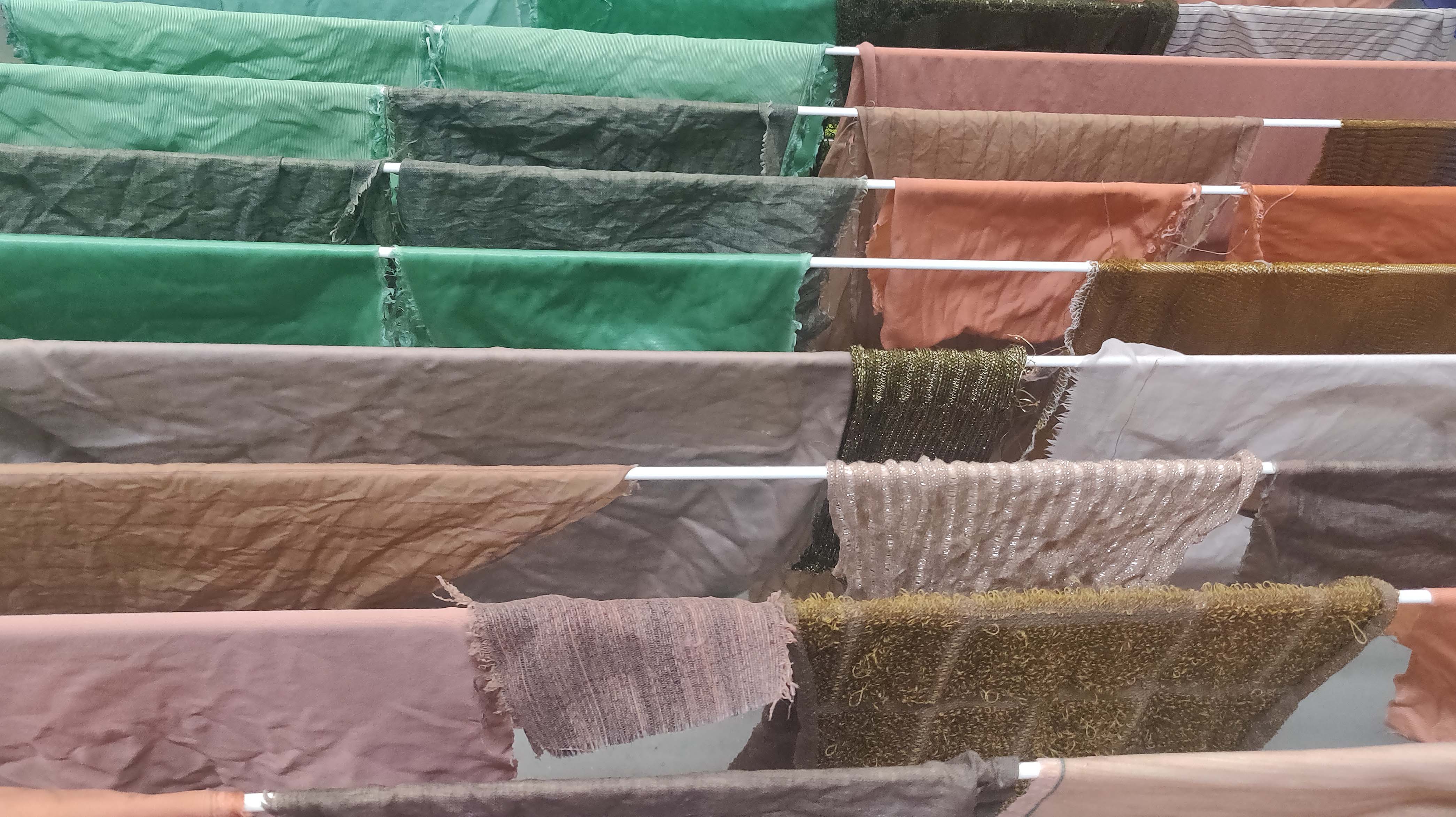
LEARNING OUTCOMES
After successful completion of the course, the student is able to:
- design a fabric collection that incorporates widely used coloration finishes such as exhaust dyeing and screen and digital printing and is based on visual research and artistic expression;
- document the techniques and materials used in the collection;
- summarize the principles of reactive and pigment dyes and their relation to textile raw materials, especially cellulose materials;
- describe the basic principles of responsible use of textile colouration finishes and memorize safe and sustainable working methods in the textile printing workshop.
Credits: 3
Schedule: 23.09.2024 - 28.10.2024
Teacher in charge (valid for whole curriculum period):
Teacher in charge (applies in this implementation): Hilkka-Maija Fagerlund
Contact information for the course (applies in this implementation):
CEFR level (valid for whole curriculum period):
Language of instruction and studies (applies in this implementation):
Teaching language: English. Languages of study attainment: English
CONTENT, ASSESSMENT AND WORKLOAD
Content
valid for whole curriculum period:
The course introduces students to the principles of most commonly used colouration finishes and textile dyes - exhaust dyeing and screen and digital printing, and reactive and pigment dyes. Learning activities within the course comprise lectures, workshops, a design assignment, individual and group tutoring, process and method documentation, and a final critique session. The assignment entails designing a fabric collection utilizing the coloration methods studied throughout the course, accompanied by the documentation of technical details for each fabric sample on a product card.
FaCT students: the course is recommended to be taken in the 1st study year as part of the Experimental Textile Design or Innovative Fashion Design course. It is intended for students without equivalent basic knowledge in prints, and other coloration finishes from BA-level studies at Aalto or at another institution. Prior discussion with the academic advisor is required.
Assessment Methods and Criteria
valid for whole curriculum period:
The final grade for the course is based on student’s attendance and participation in the contact teaching and the assignments that the students complete during the course. Introductory session is mandatory.
Workload
valid for whole curriculum period:
Overall workload (3 cr) = 81 h. Minimum 80% attendance in contact teaching is mandatory.
- Contact teaching: 35 h
- Independent work: 30 h
- Personal reflection: 15 h
- Course evaluation: 1 h
DETAILS
Study Material
valid for whole curriculum period:
Provided in MyCourses.
Course literature:
Maija Pellonpää-Forss: Contemporary Colour Methods
Substitutes for Courses
valid for whole curriculum period:
Prerequisites
valid for whole curriculum period:
SDG: Sustainable Development Goals
12 Responsible Production and Consumption
FURTHER INFORMATION
Further Information
valid for whole curriculum period:
Teaching Language: English
Teaching Period: 2024-2025 Autumn I - II
2025-2026 Autumn I - IIRegistration:
Registration in Sisu. Min. 5, max 16 students.
Priority order:
- Fashion, Clothing and Textile Design MA (FaCT) students;
- Exchange students in FaCT;
- Textiles-Material and Structure Minor students
- Textile Chemistry and Design Minor students.
Please note: Students integrating the course to MUO-E1066 Experimental Textile Design or MUO-E1068 Innovative Fashion Design are prioritized, as well as students who have completed their BA degree.
Priority order to courses is according to the order of priority decided by the Academic committee for School of Arts, Design and Architecture, https//www.aalto.fi/en/services/registering-to-courses-and-the-order-of-priority-at-aalto-arts
